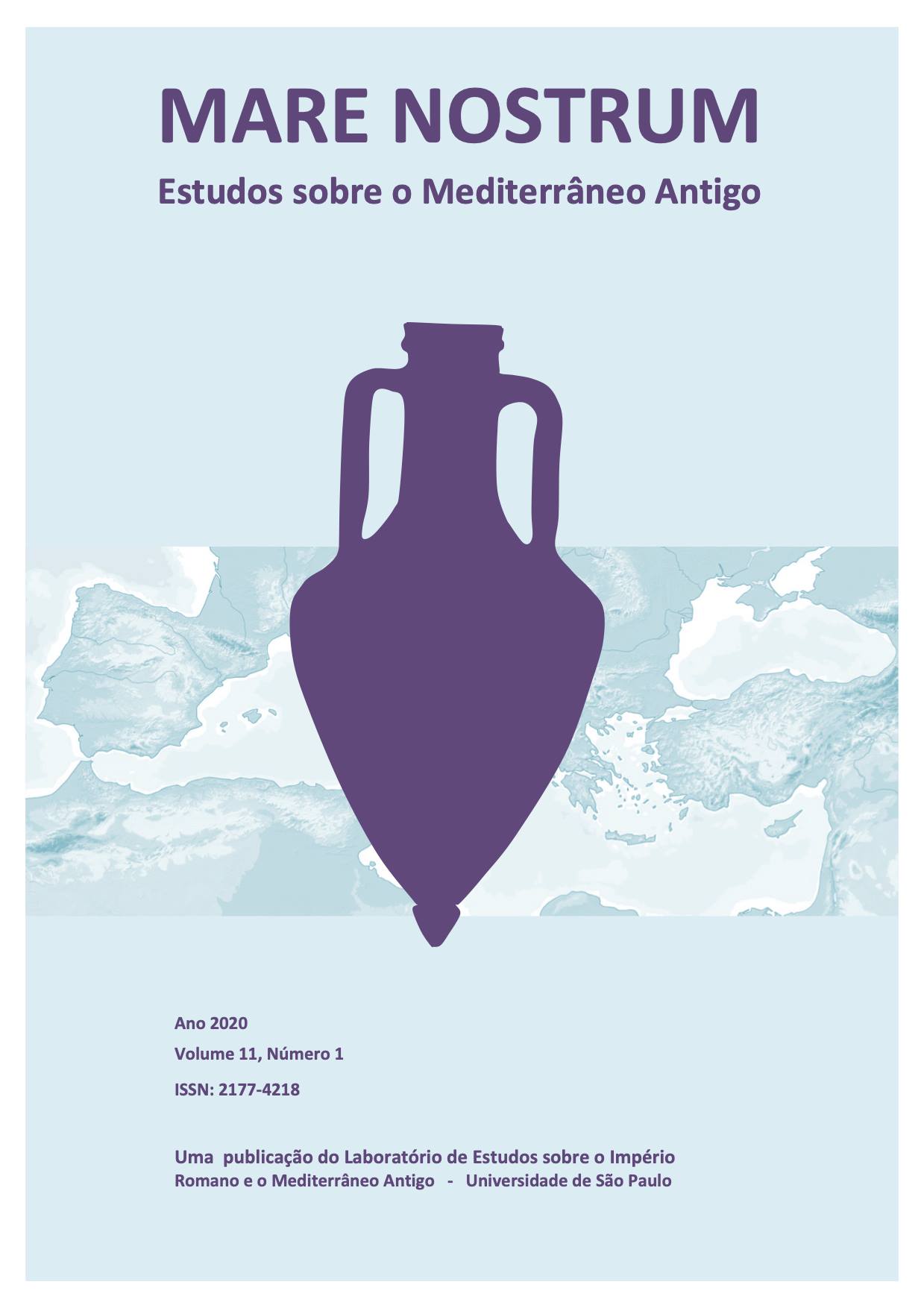Education, Gender and Intersectionality in Augustinian literature.
DOI:
https://doi.org/10.11606/issn.2177-4218.v11i1p235-257Keywords:
Education, Intersectionality, Augustinian literatureAbstract
Intersectionality is a sociological concept that makes possible to deal with gender issues in a more comprehensive way by taking into consideration the social status and ethnicity in the constructing process of the female image. Therefore, it is an important concept both in the approaches related to gender studies in general and in this study in particular. This article aims to address the education of Roman women in their social context, taking into account the literary production of the moment, as well as the intertwining of discrimination factors. Here, the influence of literary circles on the publication of the elegiac works of a woman in particular will be analyzed: Sulpícia, “the Elegiac”.
Downloads
References
Cícero.(sem data). Da República. (A.Cisneiros, trad.). Atena Editora.
Currie, H. (1753/1983). The Poems of Sulpicia, ANRW 2,30(3).
Horácio&Ovídio. (1949). Sátiras/Fastos. (A. L.Seabra& A.Feliciano de Castilho, trads.). W. M. Jackson Inc. Editores, v. 4.
Macrobius. (1969). The Saturnália. Columbia University Press.
Ovídio. (1997).Ars Amatoria. (N. Correia& D.Mourão-Ferreira, trads.). Ars Poetica.
Ovide. (1994). L’Art d’Aimer. (H. Bornecque, trad.).Les Belles Lettres.
Ovídio. (1834/1837). Oeuvres complètes. (Th. Burrette et al,trads.).C.L.F. Panckoucke.
Ovídio. (1943). Obras:Os Fastos, Os Amores e Arte de Amar. (A. Feliciano de Castilho,trads). Edições Cultura.
Ovídio.(1950). Las Heroidas. (D. Mexía, trad.). Aires: Coleção Austral.
Ovídio.(1952). Tristium.(Edição bilíngue). (A. Velloso, trad.).Organização Simões.
Ovídio.(1959). As Metamorfoses.(A. Feliciano de Castilho, trad.). Organização Simões.
Ovídio.(1997). Arte de Amar.(Edição Bilíngüe). (N., Correia,& D.Ferreira Mourão,trad.).Ars Poetica.
Petrônio. (1985). Satyricon.(P. Leminski, trad.). Brasiliense.
Pliny the younger. (1958). Letters.(W. Melmoth, trad.). W. Heinemann.
Sêneca. (1992). Consolação a Hélvia. InCartas Consolatórias. (C. F. M.Van Raji, trad.). Pontes.
Suetônio. (1959). As Vidas dos Doze Césares.(Sady-Garibaldi, trad.). Atena.
Renata Barbosa. Educação, gênero e interseccionalidade na literatura augustana.
Albrecht, M. (1997). A History of Roman Literature, from Livius Andronicus to Boethius with special regard to its influence on World Literature. Leiden.
Barbosa, R.C. (2015). Sexualidade e Gênero na Inglaterra Vitoriana: A Leitura sobre Ovídio. Eduel.
Barbosa, R.C. (Março, 2016). Ovídio e o ideal de Puella Doctana Elegia Erótica Romana.Revista Heródoto, 1,299–320.
Barbosa, R.C. (2019).Gênero, Identidade e Liberdade: A Influência da Cultura Helenística na Educação das Mulheres Romanas. In: Funari, P. P. A&Marquetti, F. (Orgs.). Autorretrato:Gênero, identidade e Liberdade(pp. 1–28). Eduel.
Bilge, S.(2009), Théorisations féministes de l’intersectionnalité. Diogène, 1 (225),70–88.Châtelet, F.(Org)(1989).. História da Filosofia: ideias, doutrinas. Vol. 1—“A Filosofia Pagã.” Zahar.
Crenshaw, K. W. (1989). Demarginalizing the intersection of race and sex; a black feminist critique of discrimination doctrine, feminist theory and antiracist politics. University of Chicago Legal Forum,139–167.
De Certeau, Michel.(2000). A operação Historiográfica. In A Escrita da História(pp. 65–119). Forense Universitária.
Filipe, R. T. (2002). As elegias de Sulpícia: Uma voz feminina num mundo de homens. Ágora: Estudos Clássicos em Debate, 4,57–78.
Funari, P. P. A & Marquetti, F(2019).Gênero, Identidade e Liberdade: A Influência da Cultura Helenística na Educação das Mulheres RomanasInAuto Retrato: Gênero, Identidade e Liberdade. Eduel, 2019
Hallet, J. P. & Skinner, M. (Eds.). (1997). Roman Sexualities.Princeton University Press.Henning, C. E. (2015). Interseccionalidade e pensamento feminista: As contribuições históricas e os debates contemporâneos acerca do entrelaçamento de marcadores sociais da diferença. Mediações, 20(2),97–128.
Mare Nostrum, ano 2020, v. 11, n. 1.
Hirata, H.(2014). Gênero, classe e raça: Interseccionalidade e consubstancialidade das relações sociais. Tempo Social, 26 (1).
James, S.L. (2003). Learned Girls and Male Persuasion: Gender and Reading in Roman Love Elegy.University of California Press.
Keith, A.(1997), Tandem venit amor:A Roman Woman Speaks of Love. In Hallet & Skinner. Roman Sexualities(pp. 295–310).Princeton University Press.
Lowy, I. (2009). Ciências e gênero. In: Hirata, H. et al, Dicionário crítico do feminismo(pp. 40–44).Editora da Unesp.
Paratore, E (1983). História da literatura Latina.Fundação Calouste Gulbenkian.
Parker, H. (1994) Sulpicia, the Auctor de Sulpicia,and the authorship of 3.9 and 3.11 of the Corpus Tibullianum.Helios,21 (1), 39–62.
Pereira, M. H.R. (1989). Estudos de História da Cultura Clássica II.Fundação Calouste Gulbenkian.
Richlin, A. (1997). Pliny’s Brassiere. In Hallet & Skinner. Roman Sexualities(pp.197–220).Princeton University Press.
Riosa, F. & Soterob, E. (2019).Gênero em perspectiva interseccional.PLURAL, Revista do Programa de Pós-graduação em Sociologia da USP, 26 (1), 1–10.Sissa, G. (1990).Filosofias do gênero: Platão, Aristóteles e a diferença dos sexos.In Duby & Perrot. História das Mulheres: A Antiguidade(pp. 79–123). Edições Afrontamento
Downloads
Published
Issue
Section
License
Copyright (c) 2020 Renata Cerqueira Barbosa

This work is licensed under a Creative Commons Attribution 4.0 International License.
Responsibility for the content published by Mare Nostrum rests exclusively with the author(s) of such content.
The reproduction of the texts published by Mare Nostrum is licensed according to Creative Commons license Attribution-NonCommercial 4.0 International (CC BY-NC).
Authors who publish with this journal agree to the following terms:
- Authors retain copyright and grant the journal right of first publication with the work simultaneously licensed under a Creative Commons Attribution License that allows others to share the work with an acknowledgement of the work's authorship and initial publication in this journal.
- Authors are able to enter into separate, additional contractual arrangements for the non-exclusive distribution of the journal's published version of the work (e.g., post it to an institutional repository or publish it in a book), with an acknowledgement of its initial publication in this journal.
- Authors are permitted and encouraged to post their work online (e.g., in institutional repositories or on their website) prior to and during the submission process, as it can lead to productive exchanges, as well as earlier and greater citation of published work (See The Effect of Open Access).









